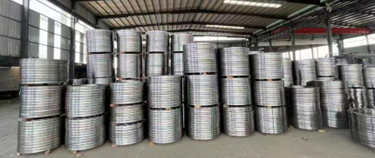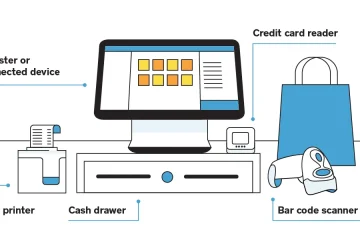Fabricating components from Monel metal requires a deep understanding of its unique properties and challenges. Monel, an alloy composed primarily of nickel and copper, is prized for its excellent corrosion resistance, strength, and durability in harsh environments. It’s commonly used in industries such as aerospace, marine, chemical processing, and oil and gas.
However, due to its hardness and toughness, Monel metal presents particular challenges during fabrication. Understanding the correct processes and techniques is essential to achieving high-quality components while minimizing waste and preventing damage to both the metal and the equipment. Monel suppliers are instrumental in providing guidance on best practices for fabrication and ensuring that you receive the appropriate grade for your specific application.
What Is Monel Metal?
Monel metal is a series of nickel alloys, with the most widely used grades being Monel 400 and Monel K-500. These alloys typically consist of 52-67% nickel, along with copper, iron, and trace elements like manganese and silicon. Monel 400 is known for its excellent resistance to acids and alkalis, while Monel K-500 provides even greater strength due to its added aluminum and titanium content.
Monel 400: Known for its resistance to seawater and a wide range of acids, it’s often used in marine environments, heat exchangers, and chemical processing equipment.
Monel K-500: With added aluminum and titanium, it offers higher strength and toughness, making it ideal for more demanding applications like pump shafts, oil well tools, and fasteners.
Monel’s combination of properties makes it an exceptional material for extreme conditions, but it also means that fabrication processes must be carefully managed to ensure the material’s integrity.
The Dos of Fabricating Monel Metal
1. Use the Right Tools and Equipment
When working with Monel metal, using the appropriate tools and equipment is critical. Monel’s hardness can lead to significant wear on standard tools, so high-quality, durable cutting tools should be used.
High-Speed Steel (HSS) or Carbide Tools: These are preferred for machining Monel metal due to their superior hardness and wear resistance. Carbide-tipped tools are especially effective for reducing tool wear and increasing machining efficiency.
Sharp Tools: Always ensure that tools are sharp. Dull tools generate excessive heat, which can work-harden Monel metal, making it more difficult to machine and causing tool failure.
2. Optimize Machining Parameters
Machining Monel metal requires precision and control. Machining parameters, such as cutting speed, feed rate, and depth of cut, must be adjusted based on the specific grade of Monel being used.
Low Cutting Speeds: Due to Monel’s tendency to work harden, it’s important to use lower cutting speeds. Typically, cutting speeds of 25 to 35 meters per minute (80 to 115 feet per minute) are recommended when machining Monel metal.
High Feed Rates: A higher feed rate is often necessary to reduce the chance of work hardening. A feed rate of 0.2 to 0.3 millimeters per revolution (mm/rev) is suggested for turning operations.
Consistent Depth of Cut: Maintaining a consistent depth of cut is important to avoid skimming the surface and initiating work hardening. Aim for a depth of cut that removes sufficient material with each pass.
3. Use Cooling and Lubrication
Monel metal’s hardness and tendency to generate heat during machining mean that cooling and lubrication are essential. Without adequate cooling, the metal can overheat, leading to tool wear and damage to the workpiece.
Coolants: Use water-soluble oils or cutting fluids to keep the temperature down and extend tool life. A steady flow of coolant helps prevent the workpiece from hardening due to excessive heat.
Lubricants: In some applications, particularly when drilling or threading, high-viscosity lubricants are recommended to reduce friction and wear on the cutting tools.
4. Pay Attention to Welding Techniques
Welding Monel metal is another area where specific expertise is required. While Monel can be welded using standard techniques, the process must be carefully controlled to avoid issues like cracking and distortion.
TIG or MIG Welding: Tungsten Inert Gas (TIG) and Metal Inert Gas (MIG) welding are the most common methods for welding Monel metal. These techniques allow for precise control of heat input, which is critical for minimizing distortion.
Preheat and Post-Weld Heat Treatment: In some cases, preheating the material to 300°F (150°C) before welding can help reduce the risk of cracking. Post-weld heat treatment, such as stress relief at 1000°F (538°C), can also improve the weld’s integrity.
5. Consider Annealing for Complex Shapes
When fabricating complex shapes or bending Monel metal, annealing may be necessary. Annealing relieves internal stresses in the metal, making it more malleable and easier to shape without cracking.
Annealing Temperature: Monel 400 should be annealed at temperatures between 1600°F and 1800°F (870°C to 980°C) to soften the material and enhance its ductility.
Controlled Cooling: After annealing, it’s important to cool Monel metal slowly to avoid introducing new stresses. Controlled cooling in a furnace is recommended.
The Don’ts of Fabricating Monel Metal
1. Don’t Use High Cutting Speeds
One of the biggest mistakes when machining Monel metal is using cutting speeds that are too high. Monel work-hardens rapidly, meaning that excessive heat from high-speed machining can cause the surface to become harder and more difficult to cut.
Work Hardening Risks: High speeds will cause work hardening, which results in reduced machinability, increased tool wear, and a poor surface finish. Stick to recommended cutting speeds and avoid the temptation to rush the process.
2. Don’t Skip Proper Tool Maintenance
Due to the toughness of Monel metal, cutting tools will wear down more quickly than they would on softer metals. Neglecting to maintain and replace tools regularly can lead to subpar results.
Tool Wear: As tools become dull, they generate more heat and increase the risk of work hardening. Regular tool sharpening or replacement is necessary to maintain machining efficiency and quality.
3. Don’t Overlook Material Preparation
Before starting any fabrication process, it’s essential to prepare the Monel metal correctly. Improper preparation can lead to poor performance during machining and welding.
Surface Cleaning: Ensure that the surface is clean and free from contaminants such as oils, grease, and dirt. Contaminants can negatively affect machining and welding results.
Stress Relief: If the material has been cold-worked, stress-relieving the Monel metal through annealing can help reduce the risk of distortion and cracking during fabrication.
4. Don’t Use Inappropriate Filler Materials
When welding Monel metal, using the wrong filler material can lead to weak joints and cracking. It’s important to select the correct filler material to match the alloy being welded.
Matching Filler Material: For welding Monel 400, a matching nickel-copper filler rod should be used. For Monel K-500, it’s best to use a filler rod specifically designed for high-strength alloys.
5. Don’t Rush the Process
Fabricating Monel metal components requires patience. Rushing the process can lead to work hardening, tool wear, and ultimately, wasted materials.
Take Your Time: By following recommended machining and welding practices and taking your time, you’ll achieve better results and reduce the risk of damaging both the material and your tools.
Conclusion
Fabricating Monel metal components requires a clear understanding of the alloy’s unique properties and the correct fabrication techniques. From selecting the right tools and machining parameters to using proper cooling and welding techniques, following these best practices ensures that you achieve high-quality, durable components that can withstand the extreme conditions for which Monel metal is known.




